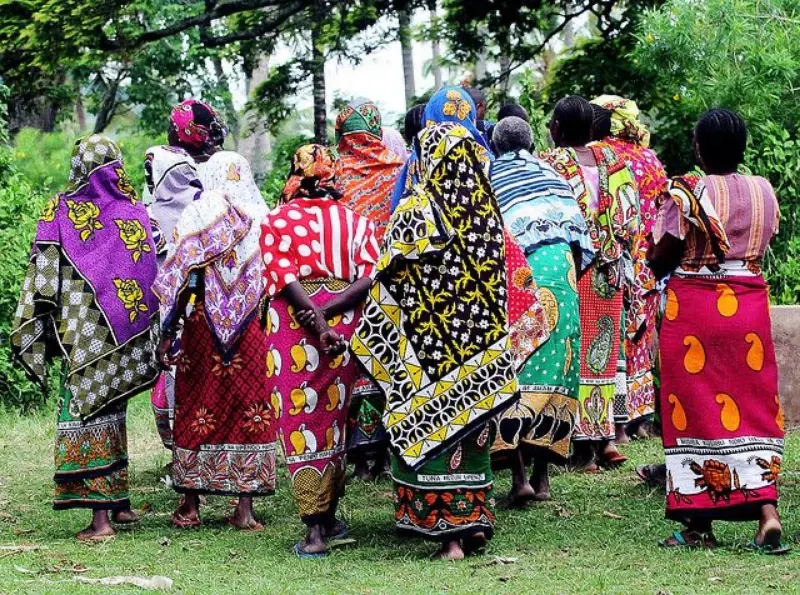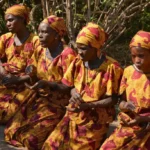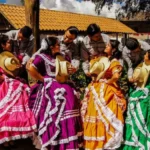Tanzania, a nation rich in cultural diversity, is home to more than 120 ethnic groups, each with its own traditions, languages, and clothing styles. From the iconic kanga to ceremonial Maasai attire, traditional clothing in Tanzania reflects the nation’s vibrant heritage and its deep connection to African identity. This article explores the significance, regional variations, and modern influence of traditional clothing in Tanzania.
The Role of Traditional Clothing in Tanzanian Culture
Traditional attire in Tanzania is more than just clothing—it represents identity, social status, and cultural pride. These garments are often used during ceremonies, celebrations, and festivals to symbolize unity and honor heritage.
Clothing also plays a practical role, adapted to the country’s tropical climate and local resources. Whether it’s lightweight wraps for everyday wear or elaborate ceremonial outfits, Tanzanian attire embodies both functionality and artistry.
Key Elements of Traditional Tanzanian Clothing
Kanga: A Symbol of Expression

The kanga is a brightly colored, rectangular cotton cloth with printed patterns and Swahili proverbs. Worn by women across Tanzania, it serves multiple purposes:
See also Traditional Clothing in Zambia: A Vibrant Display of Cultural Heritage
Traditional Clothing in Zambia: A Vibrant Display of Cultural Heritage
- 🌟 Everyday Wear: Wrapped as a skirt, dress, or headscarf.
- 💌 Communication: The printed Swahili phrases often convey messages of love, wisdom, or social commentary.
- 🎉 Ceremonial Use: Kangas are gifted during weddings, birthdays, and other significant events.
Maasai Attire: A Statement of Tradition
The Maasai, one of Tanzania’s most recognized ethnic groups, wear striking traditional clothing that reflects their cultural heritage:
- 🟥 Shúkà: A red cloth draped over the shoulders, symbolizing strength and bravery.
- 💎 Beaded Jewelry: Necklaces, bracelets, and earrings, often handcrafted by Maasai women, indicate social status and marital status.
- 🦶 Sandals: Traditionally made from cowhide, modern versions may include recycled tire soles for durability.
Kitenge: Vibrant and Versatile
Similar to the kanga, the kitenge is another popular fabric characterized by bold patterns and vivid colors. Often tailored into dresses, shirts, and suits, the kitenge is worn during both casual and formal occasions.
Dashiki: A Pan-African Icon
The dashiki, a loose-fitting garment with elaborate embroidery, is a unisex attire widely worn in Tanzania. Its vibrant design and cultural significance make it a popular choice for celebrations and gatherings.
Regional Variations in Traditional Clothing
Tanzania’s diverse regions have unique clothing styles influenced by climate, resources, and cultural traditions:
See also Traditional Clothing in Honduras: A Colorful Representation of Culture and Heritage
Traditional Clothing in Honduras: A Colorful Representation of Culture and Heritage
- Northern Tanzania (Maasai): Dominated by the red shúkà and intricate beadwork.
- Coastal Regions: Lightweight kangas and kitenges are common, reflecting the humid climate and Swahili culture.
- Zanzibar: Islamic influences are evident in the modest clothing, including long dresses (buibui) and headscarves (hijabs).
- Southern Highlands: Woolen wraps and blankets are used in colder areas.
Traditional Clothing in Ceremonial Contexts
Traditional attire holds special significance in Tanzanian ceremonies:
- Weddings: Brides often wear elegant kitenge or kanga outfits adorned with gold jewelry, while grooms wear dashikis or tailored suits.
- Initiation Rites: Clothing, such as Maasai shúkàs, plays a crucial role in marking milestones like coming-of-age ceremonies.
- Religious Events: Modest attire, including hijabs and kanzus, is worn during Islamic and Christian celebrations.
Modern Influence and the Revival of Traditional Clothing
The influence of Western-style clothing has grown, especially in urban areas, but traditional attire remains deeply valued. Efforts to preserve and promote these styles include:
- Fashion Shows: Tanzanian designers incorporate traditional fabrics like kitenge and kanga into contemporary fashion.
- Cultural Festivals: Events like the Zanzibar International Film Festival showcase traditional clothing alongside arts and performances.
- Tourism: Visitors to Tanzania often purchase kangas, kitenges, and Maasai jewelry as souvenirs, supporting local artisans.
Traditional clothing in Tanzania is a vibrant expression of the nation’s cultural diversity and resilience. From the symbolic messages of the kanga to the bold colors of Maasai attire, these garments tell stories of heritage, identity, and community. By preserving and celebrating these traditions, Tanzania continues to honor its past while inspiring future generations to embrace their cultural roots.
Through every stitch, color, and pattern, Tanzanian clothing weaves a tapestry of history and pride, reflecting the spirit of its people and the beauty of their land.